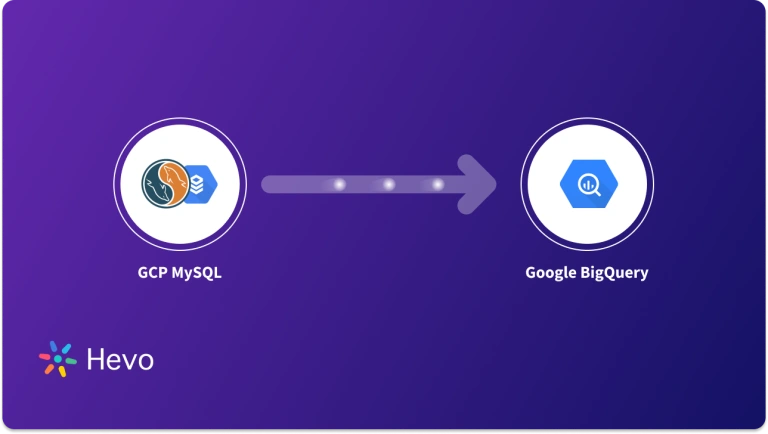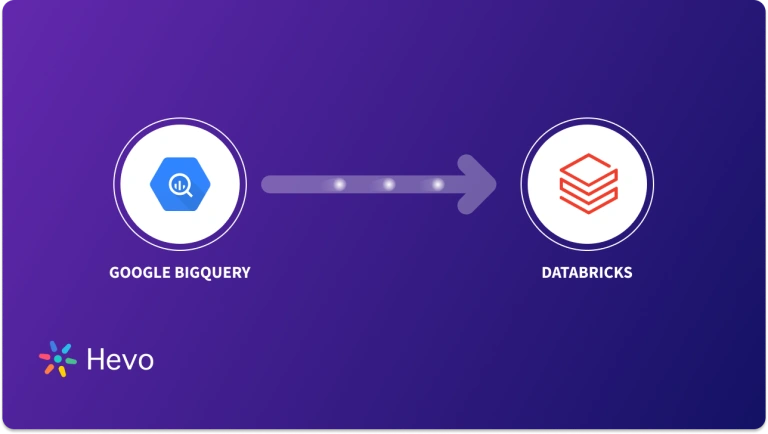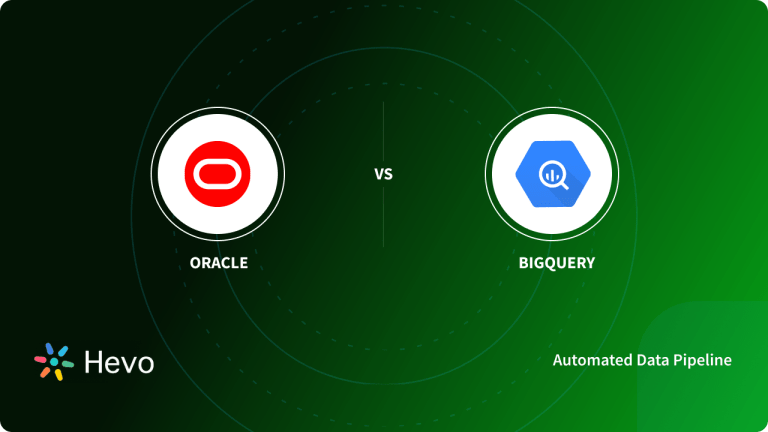 Key Takeaways
Key Takeaways- Salesforce data can be loaded into BigQuery using managed connectors, third-party ETL tools, or manual export-and-load approaches, depending on scale and control requirements.
- Most teams prefer automated, managed integrations to handle authentication, incremental syncs, schema changes, and scheduling with minimal effort.
- Manual methods are typically used for one-time exports or highly customized workflows, but require ongoing maintenance and careful data mapping.
- This guide breaks down all major approaches so you can choose the best way to move Salesforce data into BigQuery based on your use case.
Bringing your key sales, marketing, and customer data from Salesforce to BigQuery is the right step towards building a robust analytics infrastructure. By merging this information with additional data points from various other data sources your business uses, you can extract deep, actionable insights that drive business growth.
Right below, you’ll find a quick walkthrough video to help you visualize how the integration works end-to-end.
In this blog, we’ll go deeper: covering the exact steps to connect Salesforce and BigQuery, the key use cases, and the business benefits of setting up this pipeline.
Table of Contents
Prerequisites to Connect Salesforce to BigQuery
Before integrating Salesforce with BigQuery, make sure the following are in place:
- Salesforce access: An edition with API access enabled and permission to create a Connected App for OAuth authentication.
- Google Cloud setup: An active GCP project with BigQuery enabled and a dataset created.
- Service account: A Google Cloud service account with BigQuery Data Editor and BigQuery Job User roles, along with a JSON key.
- Data planning: Identify the Salesforce objects to sync, choose incremental fields, and account for data type and schema changes.
This blog covers three methods of loading data from Salesforce to Google BigQuery. The article also sheds light on the advantages/disadvantages of both approaches. This would give you enough pointers to evaluate them based on your use case and choose the right direction.
Methods to Connect Salesforce to BigQuery
Depending on your data freshness requirements, scale, and engineering capacity, there are three common ways to set up this integration, ranging from fully managed automation to hands-on manual workflows.
Salesforce to BigQuery: Method Comparison
| Method | Best Use Case | Pros | Limitations |
| Managed ETL (Hevo) | Ongoing, production-grade analytics with minimal maintenance | No-code setup, automated syncs, fault-tolerant, complete visibility | Tool cost compared to DIY |
| BigQuery Data Transfer Service (Native) | Simple scheduled loads for standard Salesforce objects | Google-managed native integration | Limited customization, batch-only, object constraints |
| Manual Export / Custom Code | One-time migrations or highly customized workflows | No vendor dependency | High maintenance, brittle scripts, manual schema management |
Method 1: Simplest Way to Move Salesforce Data to BigQuery using Hevo
Step 1: Sign In to Hevo and Create a New Pipeline
- Log in to your Hevo account.
- From the dashboard, click Create Pipeline
- Select Salesforce as the Source
Hevo will redirect you to authenticate Salesforce using OAuth.
Learn more about configuring Salesforce from our documentation page.
Step 2: Connect Salesforce as the Source
- Sign in to your Salesforce account when prompted
- Grant Hevo the required API permissions
- Once authenticated, select the Salesforce objects you want to replicate:
- Standard objects (Accounts, Contacts, Leads, Opportunities)
- Custom objects
- Choose the replication mode:
- Incremental sync (recommended for ongoing analytics)
- Full refresh (for one-time backfills)
Hevo automatically detects primary keys and incremental fields where available.
Refer to the Salesforce source guide for more details.
Step 3: Configure Google BigQuery as the Destination
- Click Add Destination and select Google BigQuery
- Connect using a GCP Service Account
- Provide:
- Project ID
- Dataset name (existing or auto-created)
- Dataset region
- Test the connection and continue
Refer to the BigQuery destination setup for more details.
Step 4: Configure Data Loading and Schema Behavior
- Choose whether Hevo should:
- Automatically create tables, or
- Load into existing BigQuery tables
- Enable:
- Auto schema mapping (recommended)
- Schema evolution handling for new or changed Salesforce fields
This ensures pipelines don’t break when Salesforce schemas change.
Step 5: Activate the Pipeline
- Review your pipeline configuration
- Click Activate Pipeline
Method 2: Using BigQuery’s Native Salesforce Data Transfer Service
Google BigQuery provides a native Salesforce connector through the BigQuery Data Transfer Service, which allows you to load Salesforce data into BigQuery without building custom pipelines.
Prerequisites
Before setting up the transfer, ensure the following:
- An active Google Cloud project with BigQuery enabled
- A Salesforce account with API access (Professional edition or higher)
- A Google Cloud service account with BigQuery Data Editor permissions
- OAuth credentials or connected app access in Salesforce
Step 1: Open BigQuery Data Transfer Service
- Go to the Google Cloud Console
- Navigate to BigQuery → Data Transfers
- Click Create Transfer
Step 2: Select Salesforce as the source
- Choose Salesforce from the list of available data sources
- Provide a transfer name and select your target BigQuery dataset
Step 3: Authenticate Salesforce access
- Sign in using Salesforce OAuth
- Grant BigQuery permission to access Salesforce objects
- Select the Salesforce environment (Production or Sandbox)
Step 4: Configure transfer settings
- Choose the Salesforce objects to sync (e.g., Accounts, Contacts, Opportunities)
- Set the transfer schedule (daily or weekly)
- Define whether the transfer should overwrite or append data
Step 5: Run and monitor the transfer
- Save and start the transfer
- Monitor job status and failures directly from the BigQuery UI
- Review logs for schema changes or API-related issues
Method 3: Manual Export and Custom Code Workflows
Manual export and custom code–based workflows give you full control over how Salesforce data is extracted, transformed, and loaded into BigQuery. This approach is typically used by teams with strong engineering bandwidth or very specific customization requirements that managed tools cannot easily support.
Step 1: Export data from Salesforce
- Use Salesforce Data Export or Data Loader to export required objects as CSV
- Or use Salesforce REST/Bulk API to extract data programmatically
Step 2: Stage the data
- Upload exported CSV files to Google Cloud Storage (GCS)
- Organize files by object and date to simplify downstream loads
Step 3: Prepare the schema
- Review Salesforce field types and map them to BigQuery data types
- Handle DateTime, Boolean, and picklist fields explicitly
Step 4: Load data into BigQuery
- Use BigQuery UI or bq load to ingest data from GCS into tables
- Enable schema auto-detection or provide a predefined schema
Step 5: Handle incremental updates (optional)
- Track LastModifiedDate or similar watermark fields
- Export and load only new or updated records in subsequent runs
Step 6: Monitor and maintain
- Update scripts when Salesforce schemas or APIs change
- Add logging, retries, and validation checks
Hevo provides a no-code way to keep Salesforce data reliably synced with BigQuery. Pipelines are fully managed, handle schema changes automatically, and support near real-time updates without manual scripting or ongoing maintenance.
Why teams choose Hevo
- Fast setup: Connect Salesforce and BigQuery in minutes using prebuilt connectors.
- Reliable pipelines: Automated retries, monitoring, and schema handling keep data consistent.
- No-code workflows: Build and manage pipelines without custom scripts.
Trusted by data teams at companies like ThoughtSpot and Postman, Hevo is rated 4.4/5 on G2 for ease of use and reliability.
Get Started with Hevo for FreeWhat is Salesforce?

Salesforce is one of the world’s most renowned customer relationship management platforms. Salesforce has many features that allow you to manage your key accounts and sales pipelines. While Salesforce does provide analytics within the software, many businesses would want to extract this data, and combine it with data from other sources such as marketing, product, and more to get deeper insights on the customer. This can be achieved by bringing the CRM data into a modern data warehouse like BigQuery. You can also connect your Salesforce account to Power BI to directly visualize your customer data.
Key Features of Salesforce
Salesforce is one of the most popular CRM in the current business scenario and it is due to its various features. Some of these key features are:
- Ease of Use: Businesses usually spend more time putting it to use and comparatively less time understanding how Salesforce works.
- Effective: Salesforce is convenient to use and can also be customized by businesses to meet their requirements. Due to this feature, users find the tool very beneficial.
- Account Planning: Salesforce provides you with enough data about each Lead so that your sales team can customize their approach for every potential Lead. This will increase their chance of success, and the customer will also get a personalized experience.
- ETL Capabilities: Salesforce connects seamlessly with other tools, which can be performed easily with the help of Salesforce ETL tools.
- Accessibility: Salesforce is a Cloud-based software, hence, it is accessible from any remote location if you have an internet connection. Moreover, Salesforce has an application for mobile phones, making it super convenient.
What is Google BigQuery?

BigQuery comes with a pay-as-you-go pricing model and allows users to pay only for the queries run. is also very cost-effective as you only pay for the queries you run. Together, these features make BigQuery a very sought-after data warehouse platform. BigQuery provides an outstanding query performance owing to its column-based storage system.
Key Features:
- Serverless Architecture: BigQuery manages servers and storage in the background, so a user does not need to.
- High Scalability: It scales seamlessly to handle petabytes of data.
- SQL Compatibility: It supports ANSI SQL, which is helpful for people who already know SQL and want to write and run queries. This also allows a user to combine various BI tools for data visualization.
- Machine Learning: BigQuery ML allows users to train and run machine learning models in BigQuery using only SQL syntax.
You can read more about the key features of BigQuery to get a better understanding of the platform.
What are the Use cases for Migrating Salesforce Data to BigQuery?
Organizations use Salesforce’s Data Cloud along with Google’s BigQuery and Vertex AI to enhance their customer experiences and tailor interactions with them. Salesforce BigQuery integration enables organizations to combine and analyze data from their Salesforce CRM system with the powerful data processing capabilities of BigQuery. Let’s understand some real-time use cases:
- Retail: Retail businesses can integrate CRM data with non-CRM data, such as real-time online activity and social media sentiment in BigQuery to help you understand the complete customer journey and subsequently when you implement customized AI models to forecast customer tendency. The outcome involves delivering highly personalized customer recommendations through optimal channels like email, mobile apps, or social media.
- Healthcare Organizations: CRM data, including appointment history and patient feedback, can be integrated with non-CRM data, such as patient demographics and medical history, in BigQuery. The outcome is the prediction of patients susceptible to readmission, allowing for creating personalized care plans. This proactive approach enhances medical outcomes through preemptive medical care.
- Financial institutions: Financial institutions have the capability to integrate CRM data encompassing a customer’s transaction history, credit score, and financial goals with non-CRM data such as market analysis and economic trends. By utilizing BigQuery, these institutions can forecast customers’ spending patterns, investment preferences, and financial goals. This valuable insight informs the provision of personalized banking services and offers tailored to individual customer needs.
Read More About: Salesforce Marketing Cloud to Bigquery
Conclusion
manual exports and custom scripts to fully managed integrations. While custom coding offers maximum control, it also brings significant overhead in terms of development effort, monitoring, and ongoing maintenance.
For teams that want a simpler and more dependable path, a managed platform like Hevo removes this operational burden. With built-in reliability, automated schema handling, and minimal setup, Hevo enables secure and consistent Salesforce to BigQuery data movement without the complexity of maintaining custom pipelines.
Sign up for a 14-day free trial and experience the feature-rich Hevo suite firsthand. You can also have a look at the unbeatable pricing that will help you choose the right plan for your business needs
Frequently Asked Questions
1. How to transfer data from Salesforce to Oracle?
Export Data: Use Salesforce Data Export or Data Loader to export data as CSV files.
Transform Data: Prepare data for Oracle if necessary.
Import Data: Use Oracle SQL Developer or an ETL tool like Hevo Data to load the CSV files into Oracle.
2. How do I transfer data from Salesforce to SQL Server?
Export Data: Export data from Salesforce using Data Export or Data Loader.
Prepare Data: Format data to match SQL Server schema.
Import Data: Use SQL Server Integration Services (SSIS) or Hevo Data to import the data into SQL Server.
3. How do I transfer data to BigQuery?
You can use automated platforms like Hevo to migrate your data to BigQuery.










